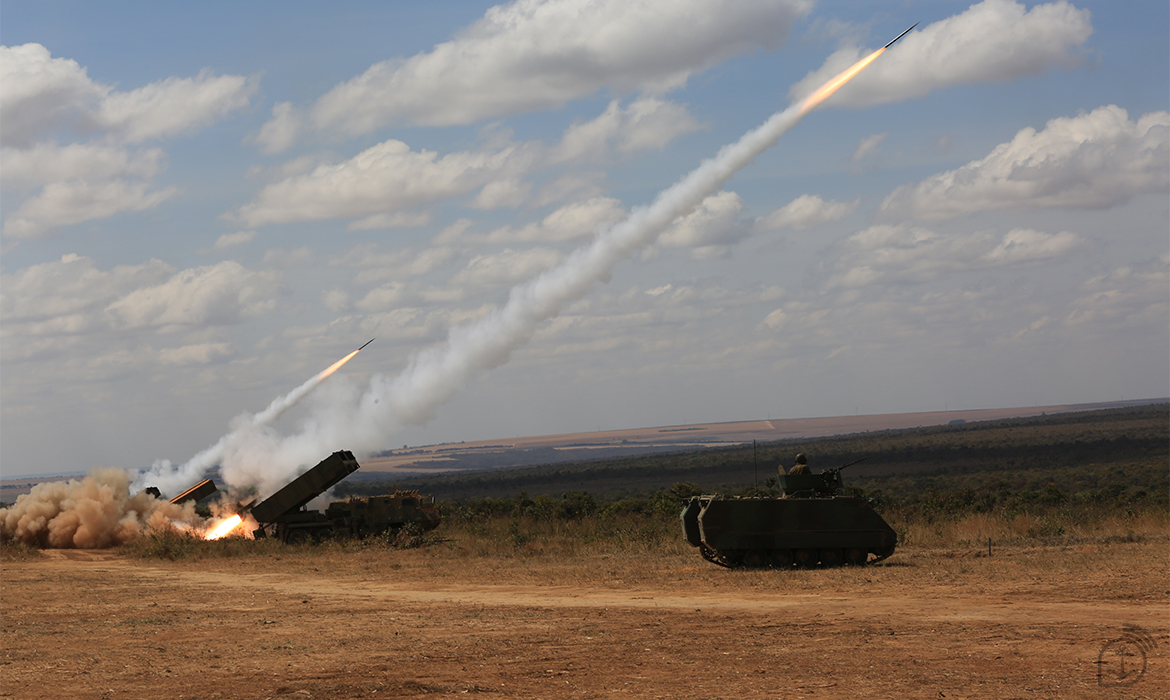By First Lieutenant Paulo Yan Carloto de Souza – Formosa, GO
The condition of permanent readiness demonstrates the readiness of the Brazilian Navy (MB) to act in the protection of our wealth, whether in the Blue Amazon or on land, in international peacekeeping operations (Haiti and Lebanon, for example) or in humanitarian operations (in Chile, in 2010, and more recently in the floods in the mountainous region of the state of Rio de Janeiro, especially in the city of Petrópolis). Among the preparation activities for the execution of these missions is Operation Formosa 2022, the largest MB training operation in the Central Highlands.
To make its execution possible, the vehicles and equipment of the Marine Corps moved from Rio de Janeiro (RJ) to Brasília (DF), over a distance of more than 1,400 km, demonstrating its expeditionary capacity.
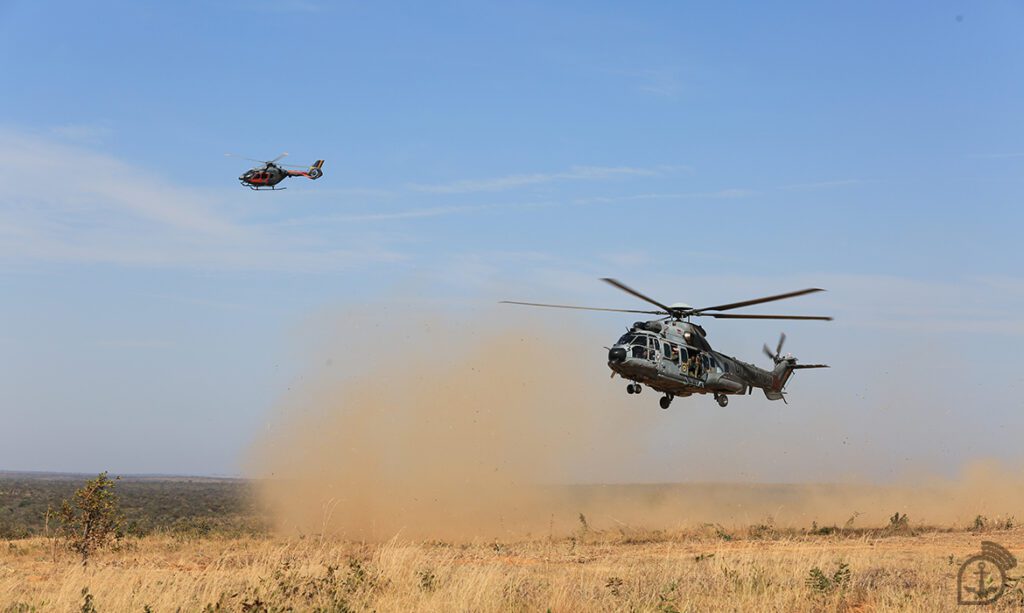
Carried out since 1988, this year’s exercise took place from August 2 to 10, at the Formosa Training Field (CIF), and included 3,500 military personnel from the three Forces. Since 2021, the operation has included the participation of the Brazilian Army and the Brazilian Air Force. About 160 vehicles and various equipment were used, including combat cars, armored vehicles, Amphibious Caterpillar Cars (CLAnf), fixed-wing and rotary-wing aircraft, artillery shells, and ASTROS Multiple Rocket Launchers (LMF). The training with live-fire included, for the first time, Marine platoons from Belém (PA), Natal (RN), Salvador (BA), Ladário (MS) and Rio Grande (RS). A detachment of the United States Marine Corps (USMC) also participated.
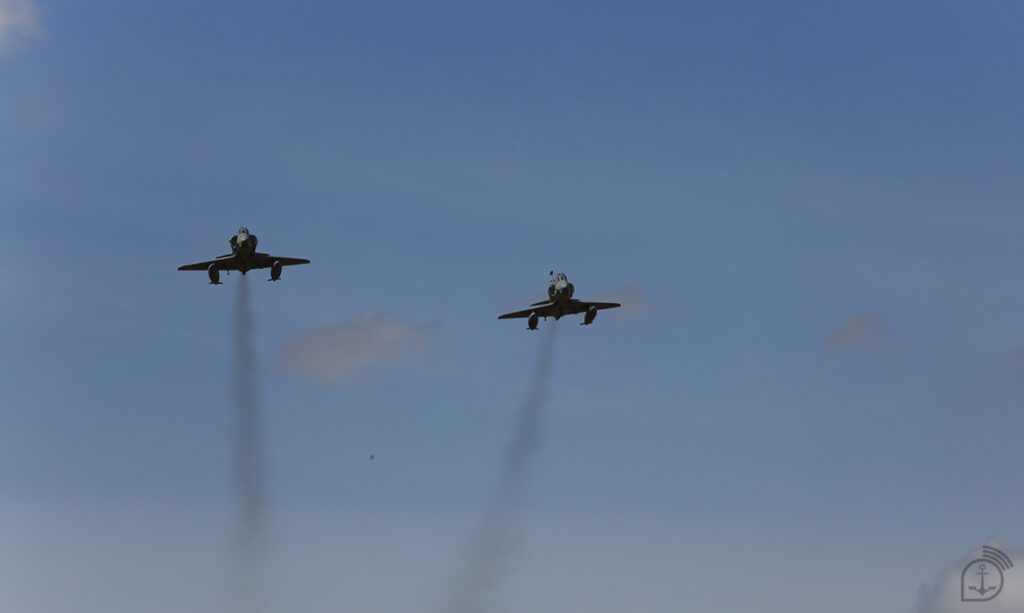
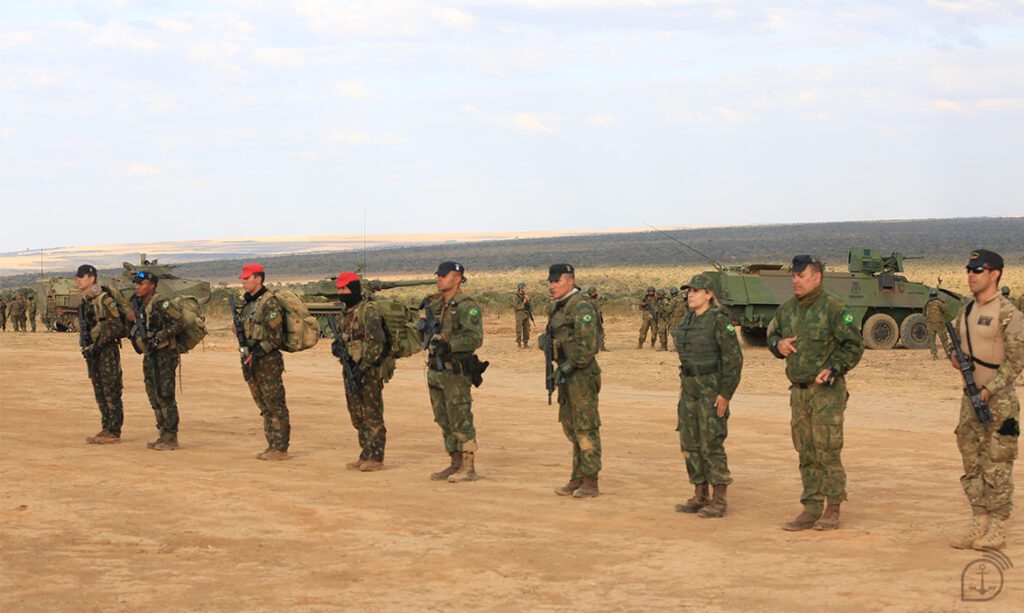
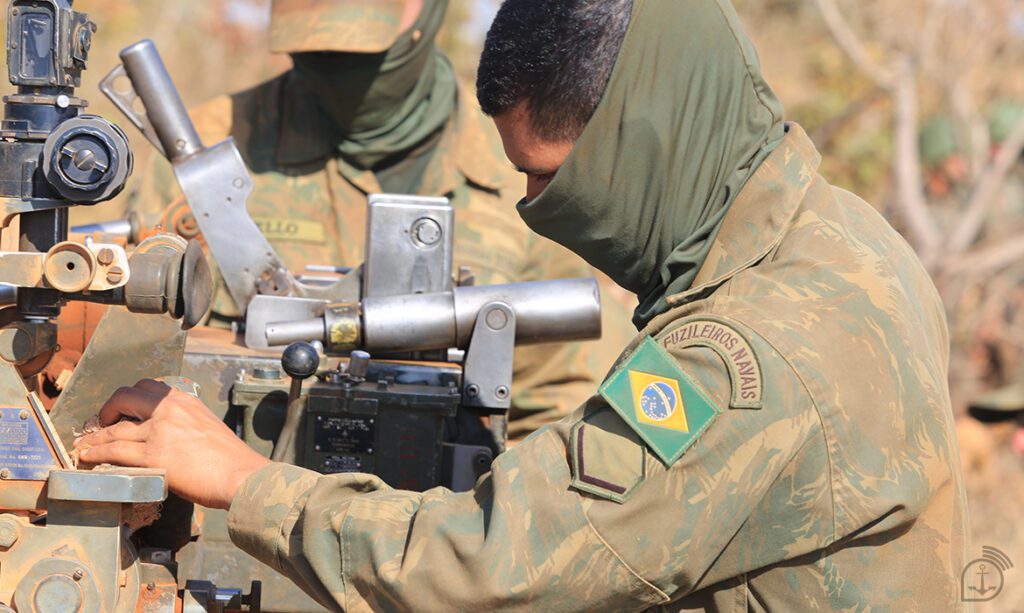
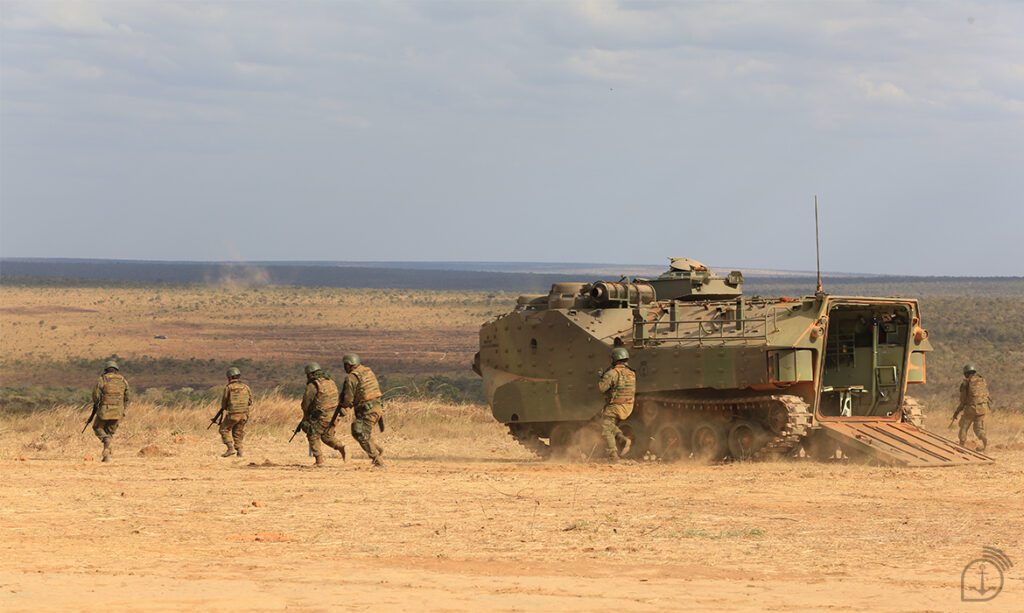
Present at the operational demonstration, the Minister of Defense, Paulo Sérgio Nogueira, emphasized that “Operation Formosa was initially conceived with the main purpose of ensuring the preparation of the Marine Corps as a strategic force of ready employment and of an amphibious and expeditionary character, capable of acting in the country and abroad, as provided for in our National Defense Strategy. With the inclusion of a series of joint activities, especially related to fire support and airspace control, this operation now represents an unmissable opportunity to train and integrate the military of the three armed forces.
Also present in Formosa, the Navy Commander, Fleet Admiral Almir Garnier Santos, highlighted that the operation prepares the MB to meet the country’s needs.
“The Navy will always be at the forefront according to the needs of the Brazilian people. What society can expect is always a lot of commitment, a lot of dedication, and a lot of effort. It is no wonder that this simulated operation here, the Amphibious operation, is the operation with the greatest attrition of all types of naval operations. The Marines are committed, the Navy is committed, and this combination of the landing force and the amphibious task force makes the Brazilian Navy a Navy with unique capabilities in the world.”
The Commander of Naval Operations, Fleet Admiral Marcos Sampaio Olsen, highlighted the importance of the training for the Fleet Marine Force. “This operation is part of the general training plan of the Naval Operations Command and it is an operation of great magnitude and complexity within this plan.
The exercise

In summary, the operational demonstration, held today (10), simulated a coordinated attack during an Amphibious Operation, in order to achieve one of the final objectives of the Beachhead. In this Wednesday’s demonstration, airplanes, helicopters, combat and armored cars were used, with bombs and machine guns; firing of tube artillery and rocket fire; infiltration of paratroopers; assembly of an Advanced Trauma Unit (ATU) with telemedicine, a Nuclear, Biological, Chemical, and Radiological (NBQR) decontamination station, and a mobile laboratory for chemical agent detection, among other activities. Due to the characteristics of the CIF terrain, all the weapons and weapon systems used in the exercise were able to use real ammunition.
For the demonstration, CLAnf, M-113 vehicles, UNIMOG 5000, PIRANHA vehicles, 105mm artillery shells, SS-30 and SS-60 rockets were used. In addition, the Brazilian Army’s artillery, such as 105mm artillery shells and LMF Astros, were used. In order to support the actions of the troops on the ground, AF-1 and Esquilo aircraft from the Brazilian Navy’s 1st General Employment Helicopter Squadron and the Brazilian Air Force’s R-99, A-1, A-29 Super Tucano and C-130 Hercules aircraft were used.
The characteristics of mobility, permanence, versatility and flexibility of Naval Power, materialized in the context of an Amphibious Operation, allow the fulfillment of the basic task of protecting power over land, opening the way for the more robust maneuver elements characteristic of the Land Force, all this in conjunction with the actions of the Air Force.
Operational free jumping actions were also carried out, with the participation of paratroopers from all three Forces. Experience also highlighted by Staff Sergeant (Marine) Wellington Ferreira da Silva. “The terrain here provides a great diversity of missions that we can accomplish. Formosa has a very atypical climate, very similar to the desert. The environment with this type of climate favors our training so that we can act in any area of the national territory.
Lieutenant-Captain (Md) Franciane Zamparetti Callegari, a radiologist and nuclear doctor specialized in NBQR Defense, who had the opportunity to jump with Sergeant Wellington, emphasized the importance of this experience. “That was the first time I participated in the Operation. I made two jumps during the operation and the last one was very special because it was when the Brazilian flag was handed over to the Minister of Defense.
Marine Corps Force
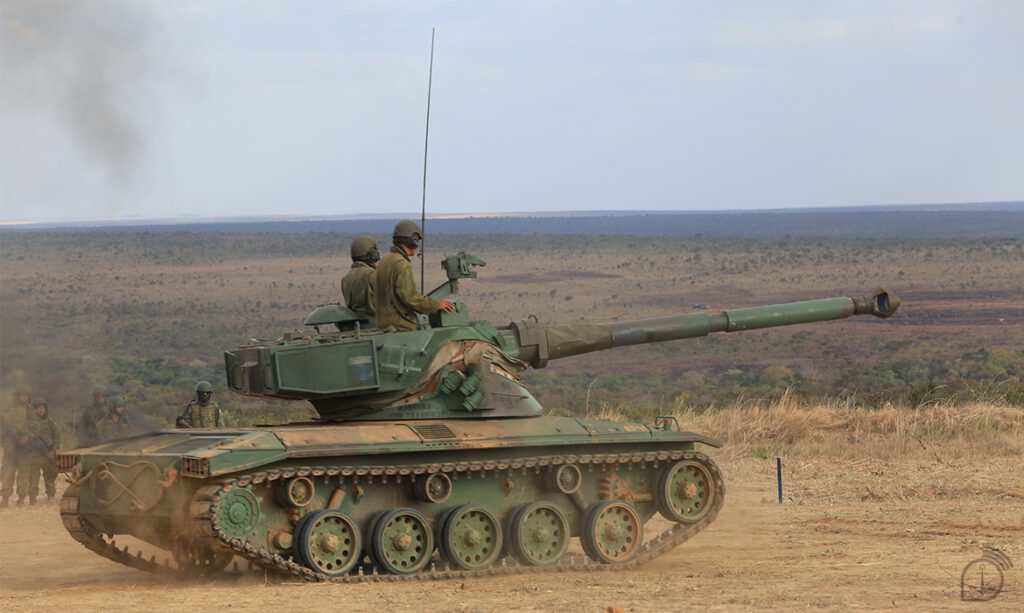
The Fleet Marine Force (Força de Fuzileiros da Esquadra – FFE) is the Brazilian Navy’s amphibious troop that acts in Naval Warfare Operations, actions with limited use of force, and benign activities. It is a ready-to-use strategic force, of amphibious and expeditionary character. In April of this year, the Marines Rapid Reaction Force was certified by the United Nations (UN) as level 3 of readiness for Peace Operations, the highest operational level for that organization. The force was thus the first in the country to achieve such certification, and is currently the only one in the world.
The Commander of the Fleet Marine Force, Vice-Admiral (Marine) Carlos Chagas Vianna Braga, highlighted the main challenges for the execution of an operation of this size: “The first was a logistical challenge to bring this amount of Marines and sailors from Rio de Janeiro to Formosa, especially because of the amount of equipment, vehicles, and armored vehicles that we brought. The second big challenge is that we are operating with live ammunition all the time, which requires qualified and professional troops.
*** Video in Portuguese ***
*** Translated By The DEFCONPress Team ***
